by Christine Sine
My apologies for not posting this yesterday. If you want to be able to read my posts in a more timely fashion I suggest you sign up to follow me on Substack
Have you ever had a dream that took a lifetime to fulfill? Or perhaps a dream that got stuck halfway to completion? Or even a dream you gave up on then suddenly saw it burst into life. That is how I have felt with the dream God gave Tom and me for what is now becoming Circlewood village.
Last week I shared about the privilege of having the first building at the village named after Tom and me. Afterwards I realized that many of you have no idea of what this means and why it is so much of an honour so I thought this was a good time to share some of the history as it is part of what sparked my interest in Celtic spirituality.
The Mustard Seed Village – Unfolding a Dream
My husband Tom always had an interest in community living and spent much time in the 1980s visiting communities around the world. After his first trip to Iona, Scotland in 1982 he was particularly inspired by the Celtic Christian tradition and their emphasis on a faith that seemed to impact every area of life. When we were married in 1992 we visited Iona together and I too was inspired by this Christian tradition and since then have read everything I can lay my hands on about this tradition.
In 1989 Tom purchased 40 acres of undeveloped land on Camano Island north of Seattle, WA with the intent of building a retreat centre that captured some of the spirit of a 6th century Celtic monastery.
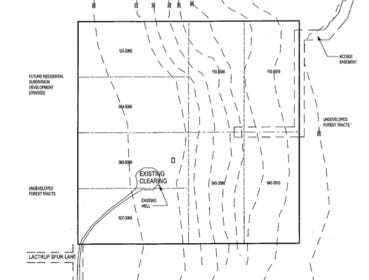
In 1991 Tom held the first of what would become annual guided prayer retreats on Camano Island. This began as a morning retreat held at the Camano Island State Park a couple of miles from the land that he had purchased.
In 1996 an acre of land on the property was cleared of alder and a well dug.
Unfortunately, because the land was still unoccupied most of the time, this clearing was soon taken over by local dirt bike riders who used it as a racing circuit. It also became a common place for people to dump rubbish.
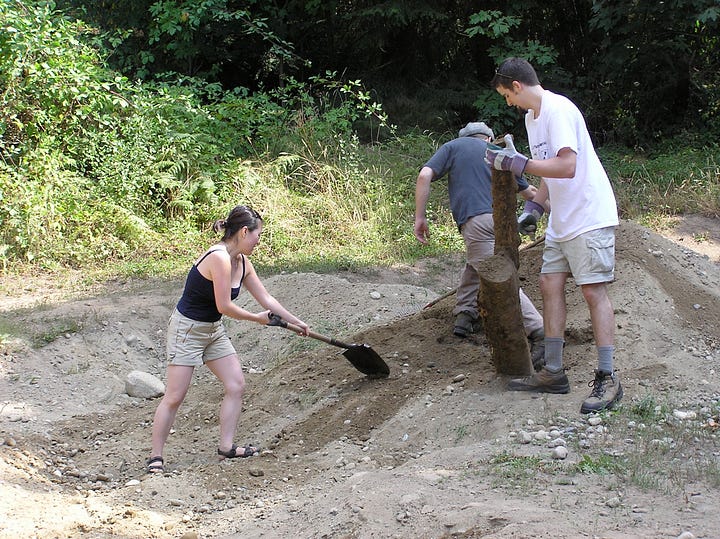
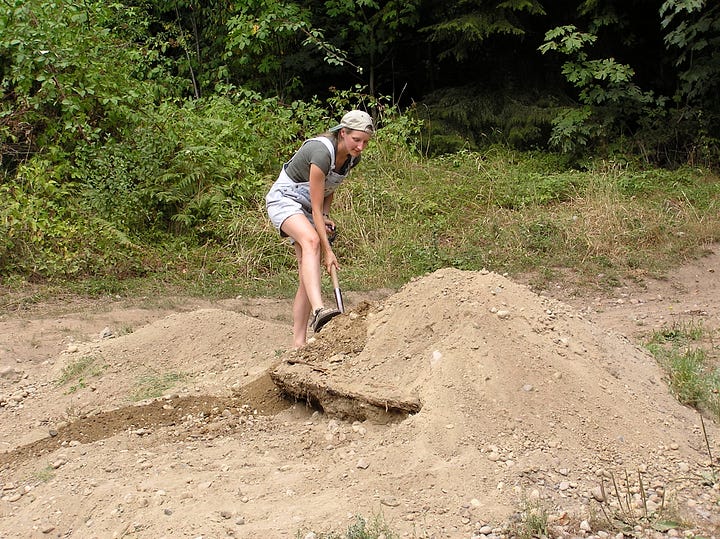
In 2004 we held the first Celtic retreat on the land itself. Participants helped reclaim the land by demolishing the dirt bike track and clearing away the huge rubbish piles that littered the land. For the first time, a number of us camped on the land Friday and Saturday night. This was initially to help with set up for the event but eventually became a more integrated part of the program which enabled us to participate in morning and evening prayers as well as the more extensive program on Saturday.
Because of our desire to connect the retreat to the land, at this first retreat we actually built an altar and surrounding booth from branches we collected. We then decorated it with leaves, seeds and other offerings gathered from the property. This was the beginning of a wonderful tradition which over the years resulted in the building of a sturdy altar that we decorate each year from leaves, seeds, branches and fruit gathered from around us.
In 2004 we set up the first prayer trail. This was so popular that the following year we set up 2 more trails and at our final retreat in 2016 we created yet another trail that circled the property. We marked these trails with prayer signs, some of which we painted with beautiful wooden calligraphy as a project at the retreats. These were appreciated not just by our retreat participants but also by neighbours sometimes take advantage of these trails as a quiet place to walk.
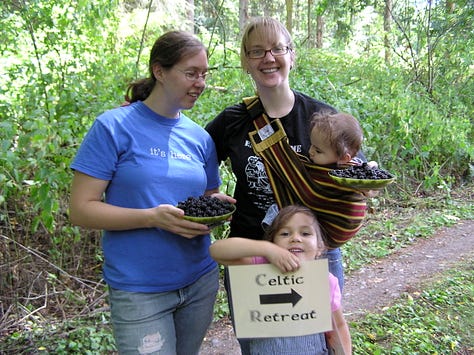
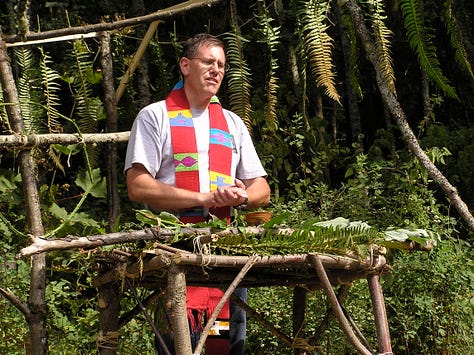

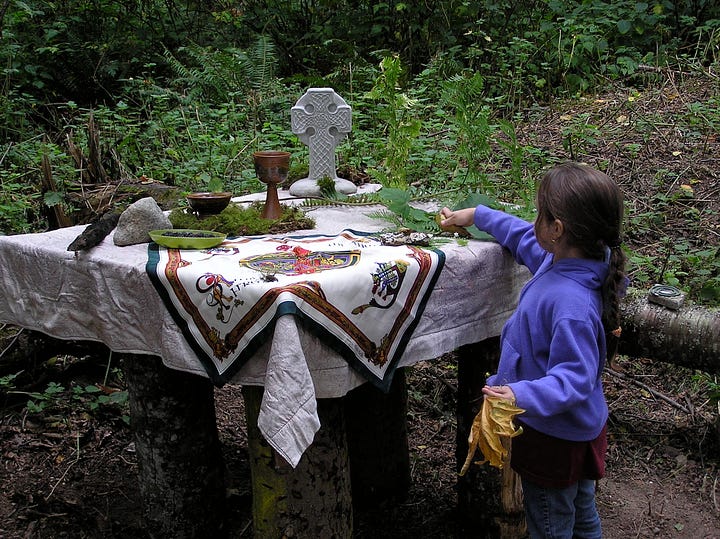
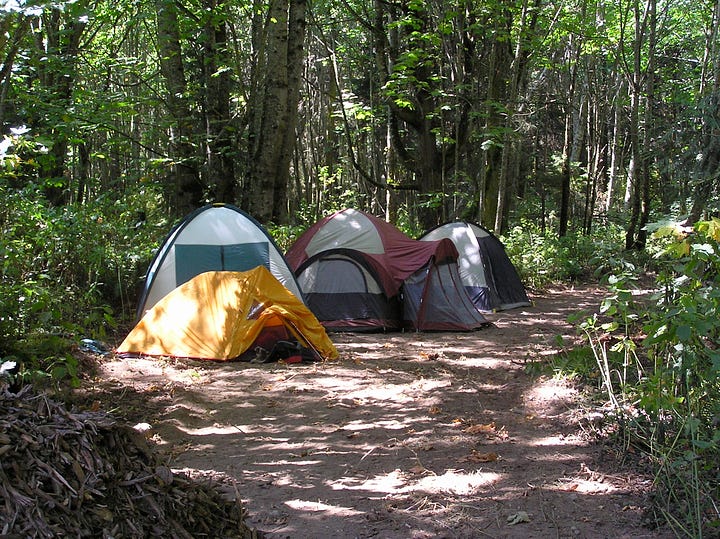
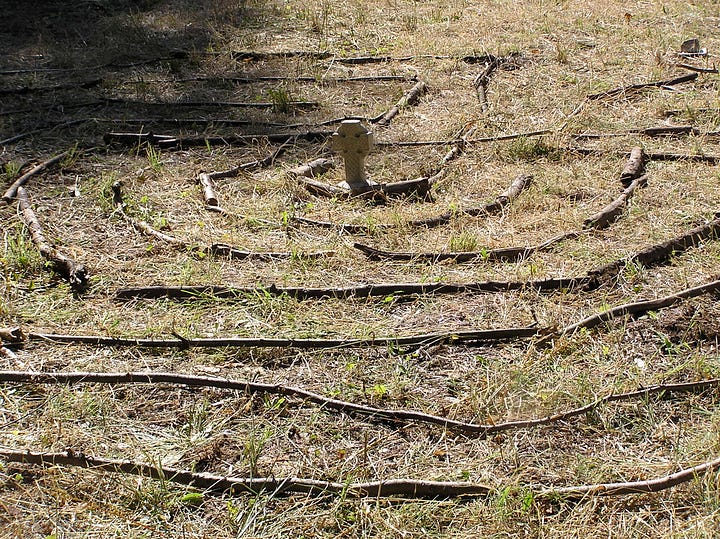
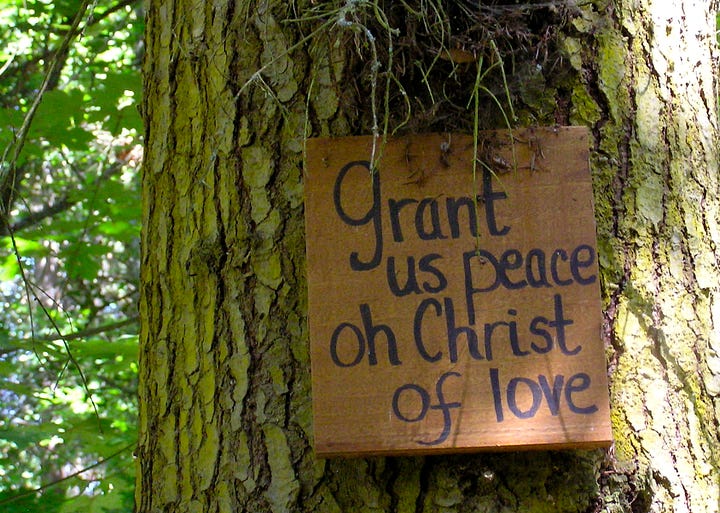
In 2007 we set up a labyrinth made from branches collected on the land. One of our Friday tasks from then on was gathering branches to reconstruct the labyrinth always expressing the hope that one day there would be a permanent one on the land. In 2007 we also cleared an area for a gathering space, a cathedral amongst the trees. This provided an outdoor chapel and sacred space separate from the general clearing.
Our annual Celtic retreat was always kid friendly, with afternoon creative projects they loved participating in, but in 2007 we incorporated a more formal children’s program into the Saturday program. It was so much fun to have 50 – 60 people of all ages celebrating the land, praying together, being creative and enjoying each other.
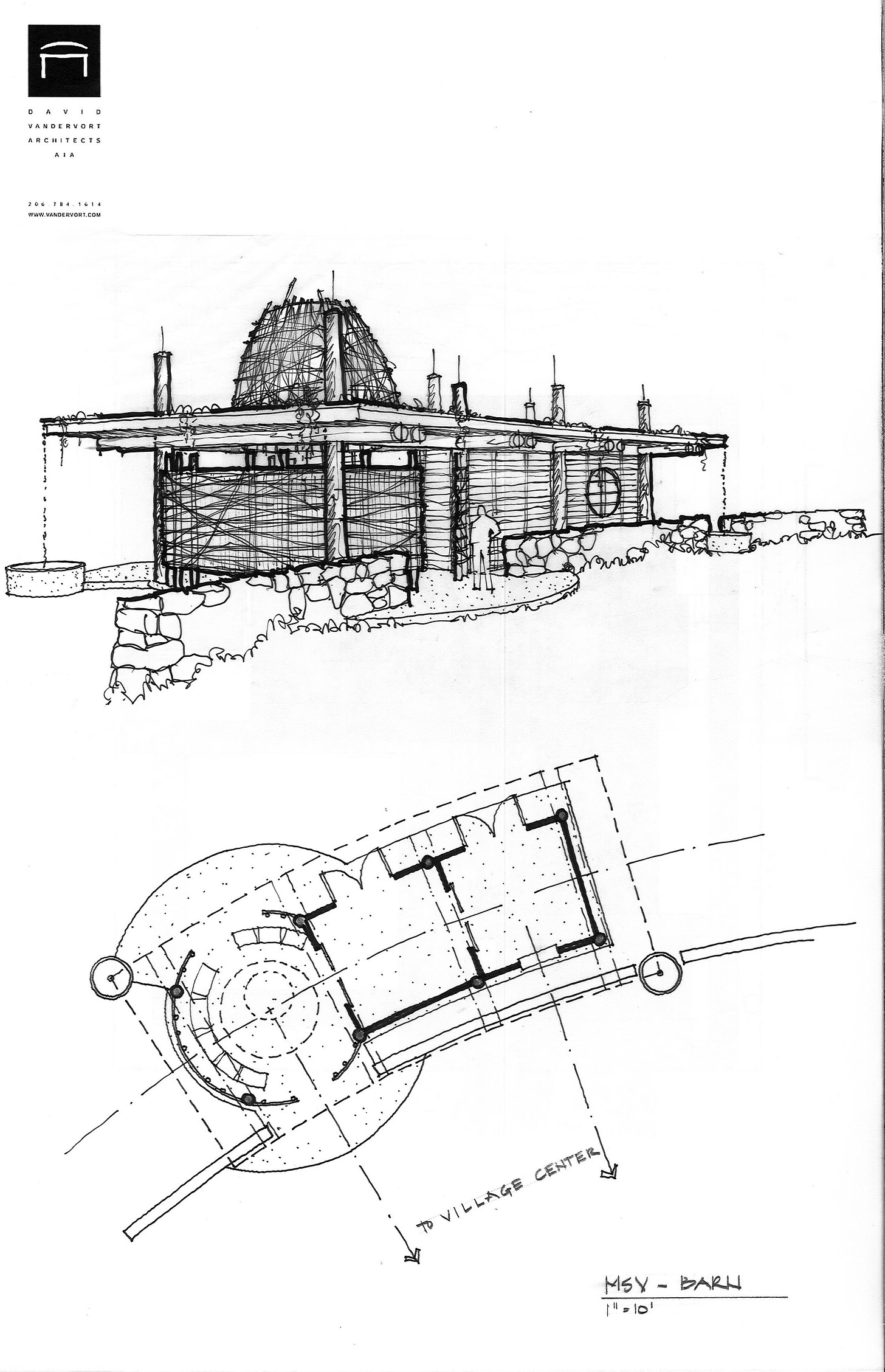
Tom and I had a clear vision for the land and the establishment of a village where people could learn a more sustainable way of life, but we always struggled to raise the money to make that village a reality. By 2010 working with architect David Vandervort, we had a plan for the land and in 2012 we finally began work on the first building. I will never forget the excitement over the next couple of years of seeing the logs delivered, watching the concrete slab laid and then the beams were raised. Finally the walls and roof were added and the highlight of it all was in 2015 when the beautiful circular windows were installed.
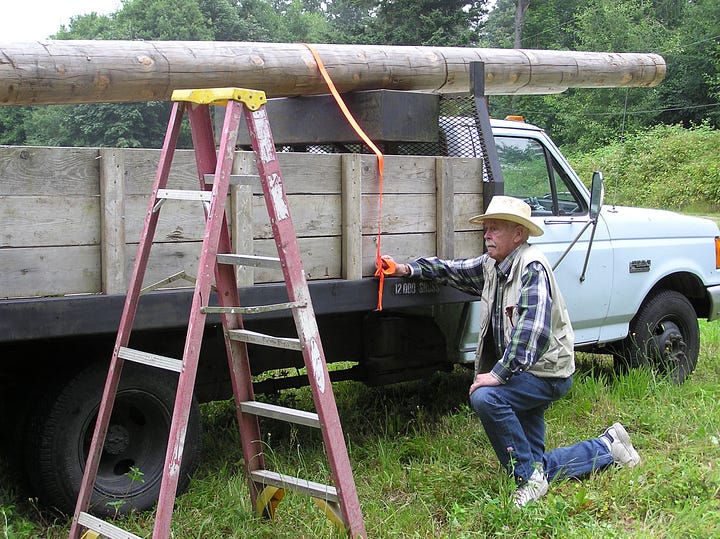
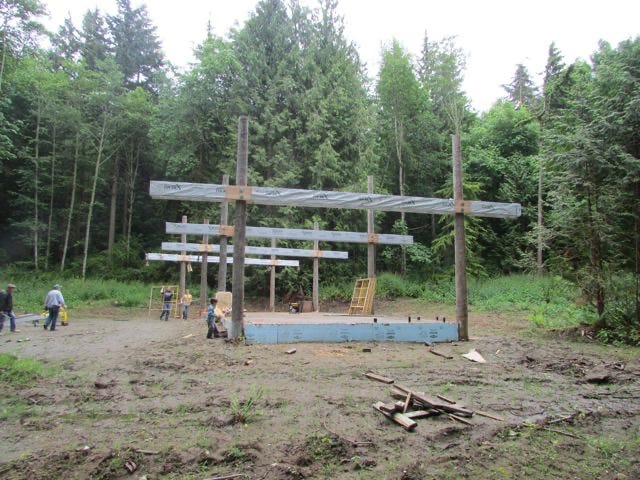
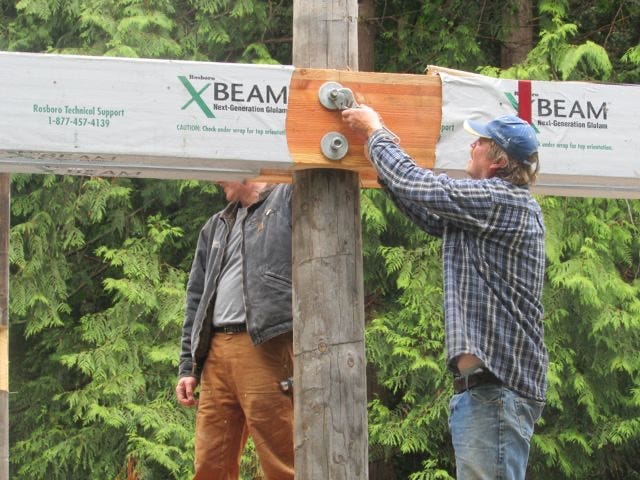
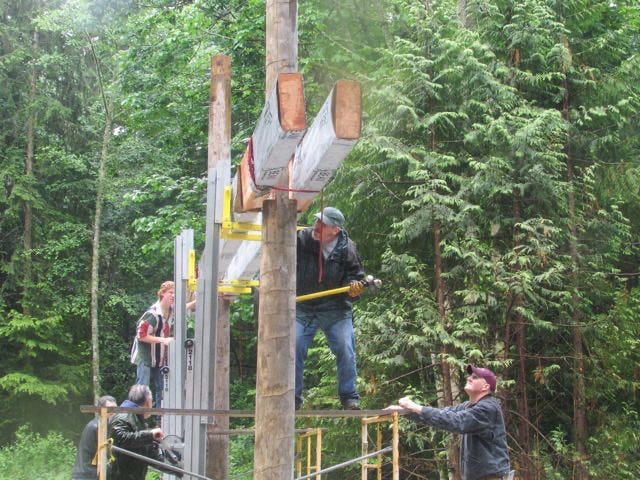
Then disaster hit. The building was vandalized and the windows shattered. This happened twice and the second time the windows were not just broken but completely pulverized. We too felt shattered. That year at our Celtic Retreat we created a practiceat the beginning of the retreat in which we incorporated the shattered glass into our altar. It was very meaningful but did nothing to assuage the ache in our hearts at what had happened.
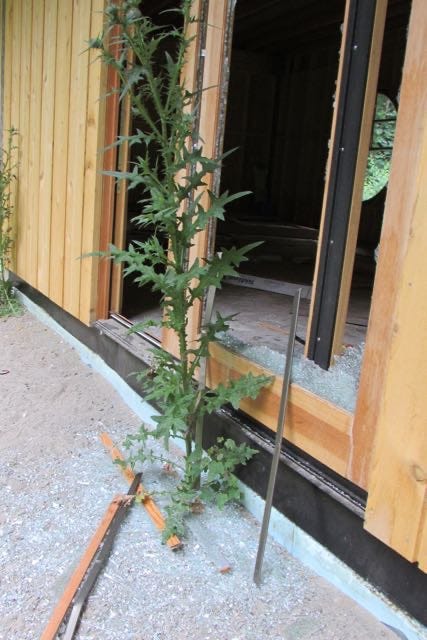
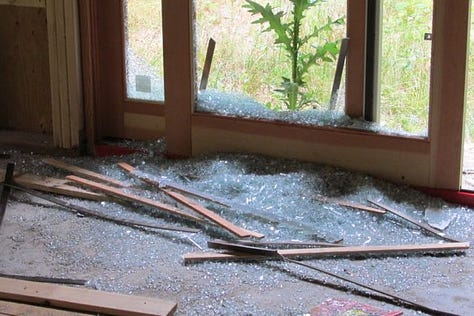
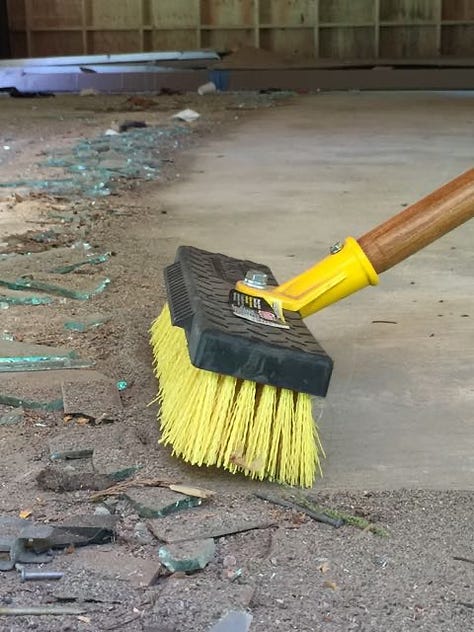
The following year, our 25th retreat, turned out to be our last. Tom and I realized after the vandalism that we did not have enough time and energy in our hourglasses to complete the project and began praying that God would provide someone else who had both the vision and the energy to complete what we had started.
Miraculously it seemed, through a mutual friend Forrest Inslee, we met James Amadon who carried a similar vision for a centre where people could learn to live more sustainably and put ecological concern at the centre of faith. So in 2017, under James’ leadership, Mustard Seed Associates soon became Circlewood and the village was re-conceived as Circlewood Village. Circlewood has continued the work on Camano by establishing a 30-year forest stewardship plan, updating the site development plan, and continuing to host retreats and learning events on the land.
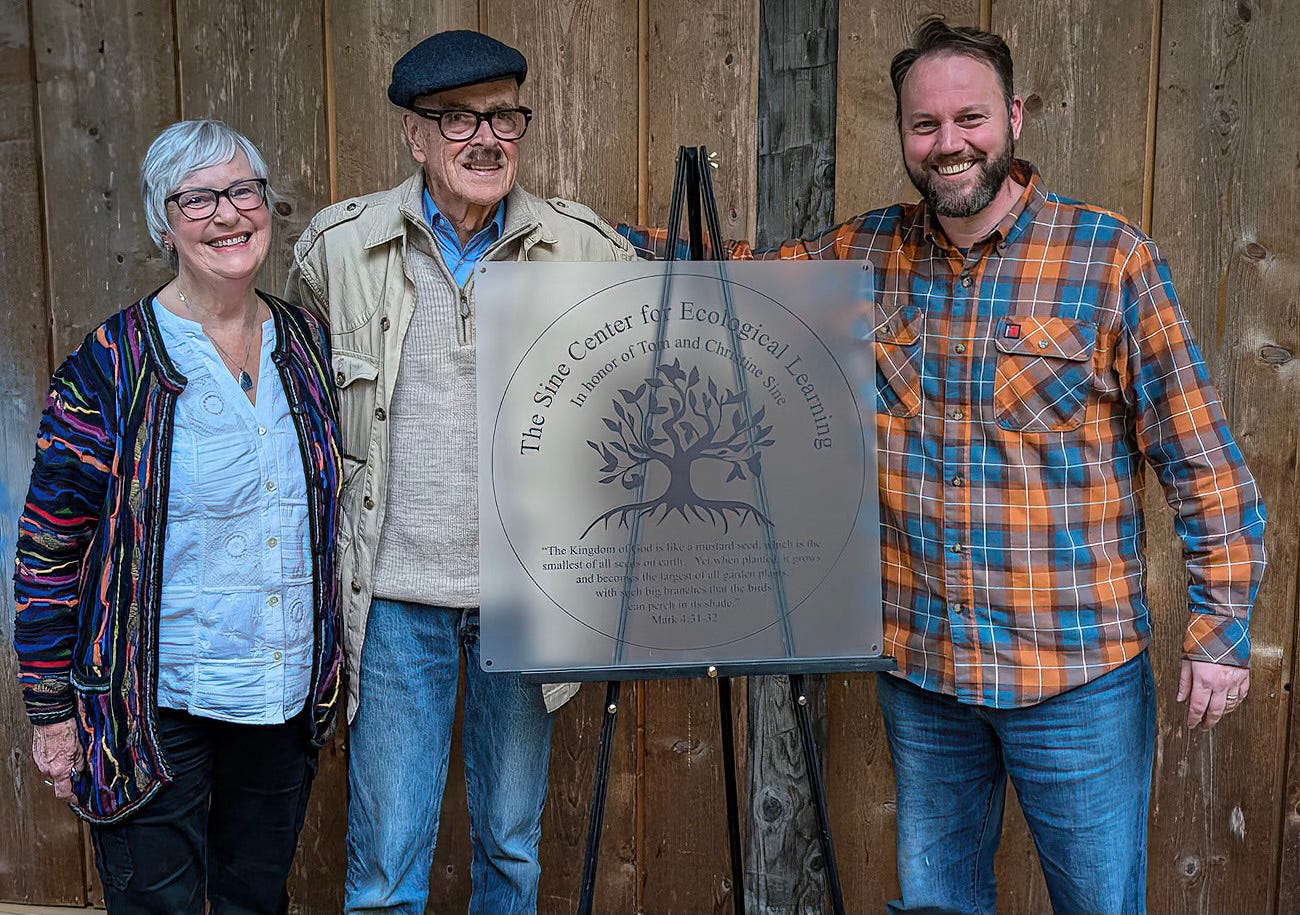
A couple of weeks ago the first building, now almost complete, was dedicated and much to our surprise was named the Sine Center for Ecological Learning. Tom and I are delighted. The dream that we thought died in 2016 has risen from the ashes and is now thriving. Under the able leadership of James Amadon and his Associate Director Forrest Inslee who also hosts the Earthkeepers podcast, it has grown and become part of a growing, global movement. Its mission “to accelerate the greening of faith.” We all feel that this ministry is more important now than it ever was and Tom and I are proud to continue to support this wonderful project.

